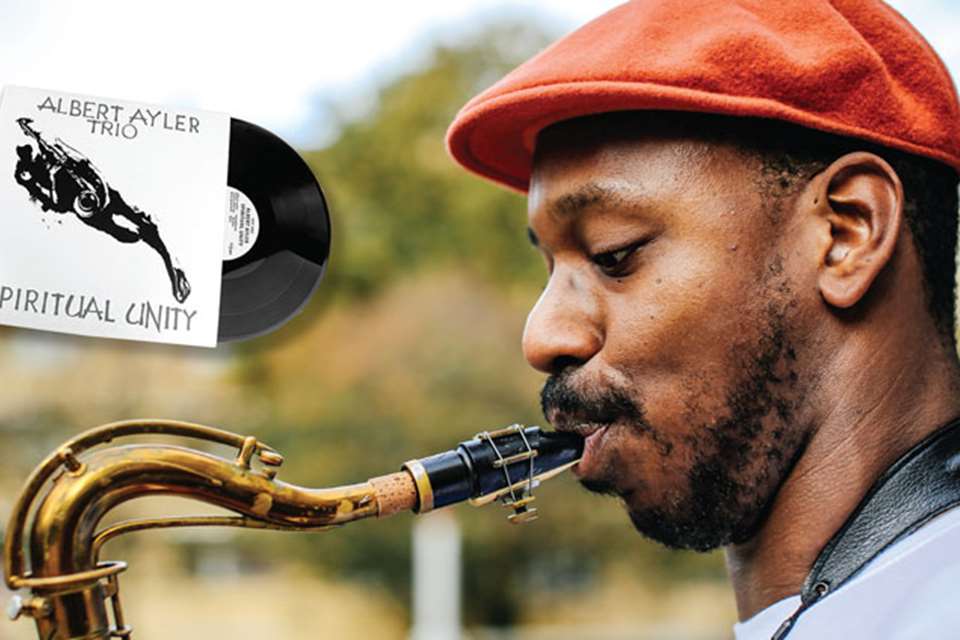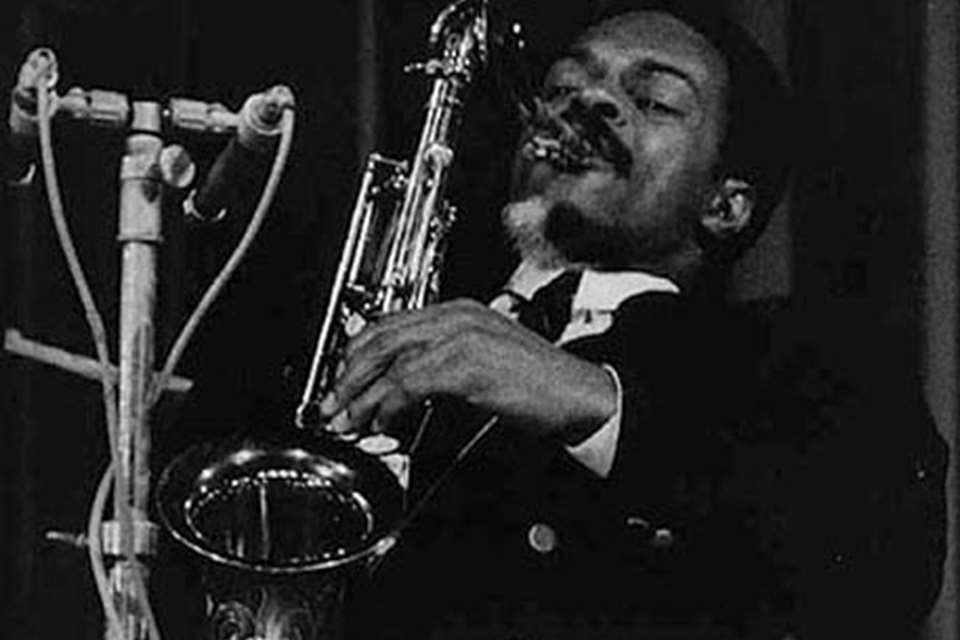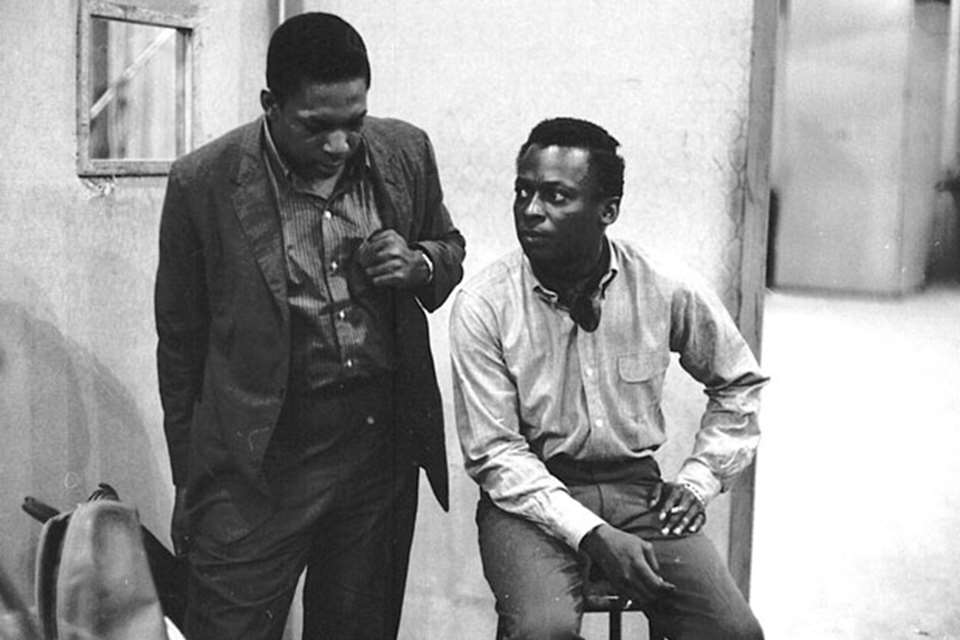Why Albert Ayler's creative spirit still comes roaring out of the speakers more than 50 years after his untimely death
Stuart Nicholson
Wednesday, January 25, 2023
Albert Ayler was a progenitor of free and spiritual jazz, an innovator whose influence on the music is profound. Stuart Nicholson assesses his career and the complex personality that shaped his singular sound
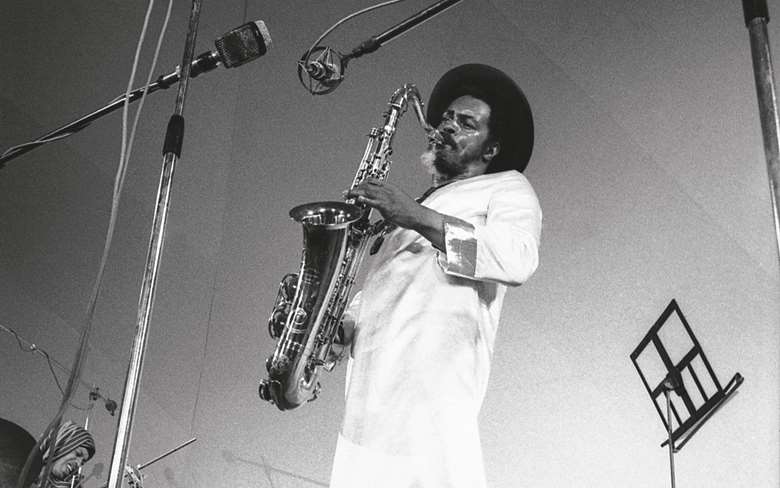
When saxophonist Albert Ayler was found floating in New York’s East River in 1970 at the age of 34, it marked the end of a troubled period in his life. It was the same year that Jimi Hendrix died; two shooting stars who had lit up the night sky and who were abruptly silenced in their prime. And like Hendrix, the rumour mill went into overdrive, especially in Ayler's case, when the New York Medical Examiner ruled that he had died by “asphyxia by submersion – circumstances undetermined.”
See also: Albert Ayler – 10 Essential Albums
What were those circumstances? Soon stories of dark deeds were circulating among musicians: a shooting by the Police, the Mafia or drug dealers, despite the coroner’s report indicating there were no bullet wounds and that people close to Ayler said he did not do drugs. Another rumour connected him with the mistress of a Mafia boss, while still another had him tied to a jukebox before being thrown into the East River.
My blood has got to be shed to save my mother and my brother
Albert AylerNo one can be sure what caused Ayler’s death, but what we do know is that two years earlier, he had fired his brother Donald from his band (Donald subsequently suffered a mental breakdown). It was something that filled Albert with remorse. Subsequently, their mother spent hours on the phone with Albert pressurising him to re-hire his sibling – this at a time when Albert was believed to have had mental health issues of his own. Ayler’s wife, Mary Parks, later came forward to say that in her opinion, family pressure had been the cause of Albert’s death, while his sister claimed she had tried to talk Albert out of taking his own life, to which he apparently responded: “My blood has got to be shed to save my mother and my brother.”
But in the end, it was, perhaps, a culmination of issues in addition to those surrounding his brother – his relationship with his wife had reached breaking point, he had recently lost his recording contract with Impulse!, causing him to worry he might become a marginal figure, while certain musicians and critics had been putting it about, he was a charlatan and a 'traitor to the black cause'.
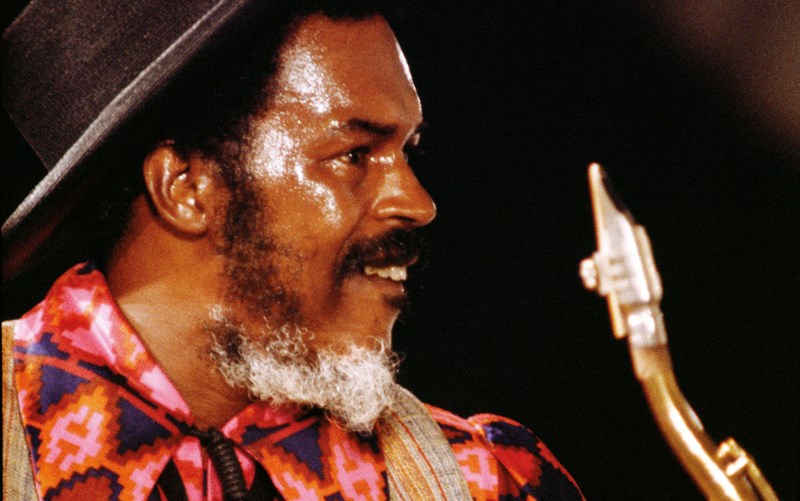
Albert Ayler at the Fondation Maeght, 27 July, 1970 (photo: Jean-Pierre Leloir)
A catalyst and a visionary, he seemed to be moving too fast during his lifetime to gain purchase on his value system, while his mysterious death initially overshadowed his legacy. His music made ruthless demands of the listener: his fullness of tone, fondness for arbitrary overstatement and his slippery tonality today come roaring out of the speakers with the aggression and self-confidence of a brilliantly creative spirit unconcerned with creating a gulf between his music and his audience. Yet in recent years that gulf has gradually narrowed, more through rock and metal fans who saw in Ayler’s music an antidote to rock’s consumerist impulses, than jazz fans who took a while to realise he may have been one of the music’s most original voices.
It was all so different when Albert Ayler first embarked on his musical odyssey. Seen as a prodigy on saxophone, he grew up in a middle-class family in Cleveland, Ohio. A musically-inclined father provided early music lessons, followed by formal lessons at the Benny Miller School of Music and – from age 10 to 18 – the Cleveland Academy of Music. He played in school bands, marching bands, in church and in community centres. He gave recitals at the Hampton Social Settlement, and at the age of 12, the local press praised his solo sax recital. While in high school he took up golf, and within two years was playing off scratch – he became captain of the John Adams Golf Team and he won the City Golf Club Annual Tournament, a major event in the Cleveland black community. Years later he claimed that he could easily have become a golfer, but added: “music was in my heart.”
When he sat-in at local French jazz clubs, audiences and musicians found his music and powerful tone disconcerting
In 1953 and 1954, he spent the summer vacations touring with bluesman Little Walter and his band, and the following summer with Lloyd Price, both crucial formative experiences that were some distance from the middle-class neighbourhood that had shaped his life experiences until then. He also began researching and studying music played in black churches, which would later find voice in compositions such as ‘Ghosts,’ ‘Holy Family’ and ‘Holy Holy.’ He graduated in 1955, and with his stylish wardrobe, earned a reputation as a ladies’ man. For the time being, he took a non-musical job with a manufacturing company Thompson-Ramo-Wooldrige, enabling him to buy a green and silver Cadillac. He formed a relationship with Carrie Roundtree, who in 1957 became pregnant. However, the day before her first support payment was due, he enlisted in the US Army.
At Fort Knox, PFC Ayler became a member of the Regimental Big Band, and, as he hoped, the army provided him with a rounded, formal music education. Posted to France, he absorbed French military music as much as the music of Ornette Coleman from recordings. He enjoyed the uplifting French national anthem ‘La Marseillaise,’ a tune he referenced throughout his career. By now he was developing a wholly original style, recasting gospel influences through the prism of free jazz. But when he sat-in at local French jazz clubs, audiences and musicians found his music and powerful tone disconcerting. While on leave, he travelled north, to Denmark and Sweden, where he found audiences and musicians more accepting.
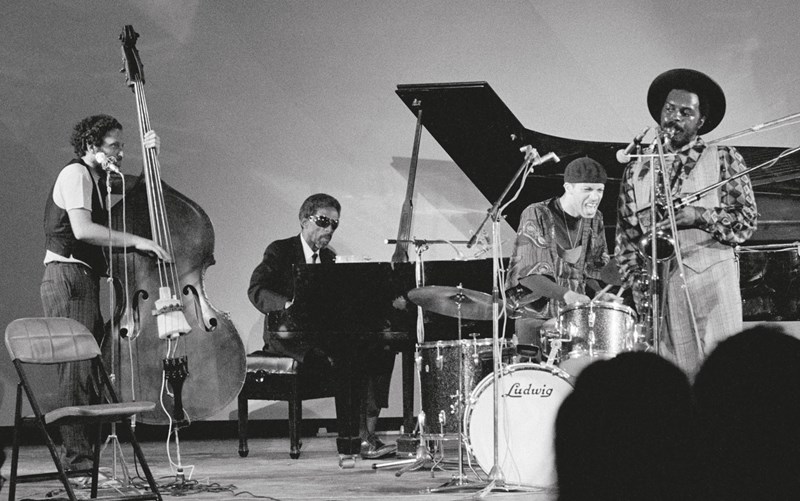
L-R Steve Tintweis, Carl Cobbs, Allen Blairman and Albert Ayler (photo: Jean Pierre Leloir)
On discharge, he struggled to find acceptance for his music. Returning to Stockholm, even avant garde guitarist Ingemar Bocker could not help wonder, “Is this the Emperor’s new clothes?”. Ayler made his first album in Stockholm, Something Different!!!!!, a limited release. Reviewing it in 1963, Lars Werner of Orkester Journalen noted: “Musical development in his playing almost exclusively appears to be limited to tonal aspects. In this sense his approach to melodies plays no role.” Ayler may have been a virtuoso musician, but he sounded deceptively primitive, with a tone so huge and played at such a volume it belied his modest stature (his Army records show he was 66 inches tall). Three months later, shortly before returning to the US, he recorded My Name Is Albert Ayler.
Settling in Harlem, he played with Cecil Taylor, where he felt musically at home, but paying work was in short supply. In early 1964, he recorded Spirits (later re-released as Witches & Devils) with Norman Howard on trumpet, Henry Grimes on bass and Sonny Murray on drums. A second album from the session, Swing Low, Sweet Spiritual with Call Cobbs on piano in Howard’s stead, was released a decade later. Spirits is Ayler’s first mature statement on record. Sound, not harmony, was his guiding star, and beyond the reassuring certainties of 4/4 rhythm on, for example, the title track and ‘Holy, Holy,’ everything else was up for grabs. Like Rorschach ink blots, Ayler’s music was then, and still is, many things to many people, but more importantly, Spirits was a way station towards greater things to come.
When we let the will of God produce itself in us, we will work with Him, and will be blessed in all our actions
Albert AylerThe impact of his next album, Spiritual Unity, for the fledgling ESP-Disk label, with Gary Peacock on bass and Sonny Murray on drums, has been long lasting. The album, which many consider his finest, is a convincing elaboration of the freedom principle. “It wasn’t just that he could play free or that he invented playing free,” said Carla Bley, “he played beautiful melodies and that’s just something people respond to.”
Three years later Ayler explained the inspiration behind the album: “When we let the will of God produce itself in us, we will work with Him, and will be blessed in all our actions.” His faith was such it enabled him to deal with rejection, setbacks and financial struggle with remarkable equanimity and an absence of bitterness that many musicians felt as work became scarce with the rise of pop and rock music in the 1960s.
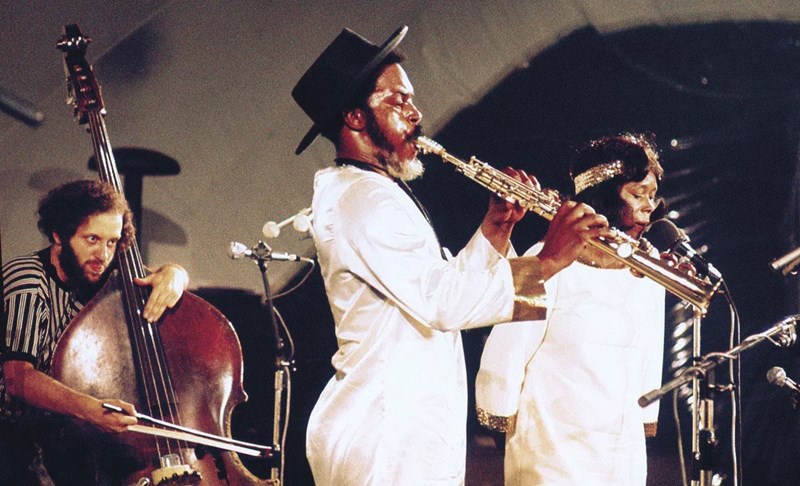
L-R Steve Tintweiss, Albert Ayler, Mary Parks. Fondation Maeght, July, 1970 (photo: Philippe Gras)
A week after recording Spiritual Unity, Ayler’s group, plus saxophonist John Tchicai, trombonist Roswell Rudd and trumpeter Don Cherry, recorded New York Eye And Ear Control for ESP. Here, Ayler is the lead voice, his congregation interacting with his powerful musical gestures, declarations, and provocations, rather than challenging them. But sitting in at New York clubs was still a problem; he was invariably met with a hostile response. Taking his band to Europe, he said, “American-minded people are not listening to music any more… we wanted to leave to give some of our love to someone who would really sit and listen and be quiet.” Performances at the Montmartre Club, Copenhagen were documented as The Copenhagen Tapes, and met mixed reviews. As the tour pressed on through Europe, he was encouraged by more open-minded audiences; this was the 1960s, when established convention was being challenged at every level of society.
Back in the US, Cherry was replaced by Ayler’s brother Donald on trumpet, who had recently taken up the instrument. “What you don’t know I’ll teach you,” enthused Albert, “stay natural.” Donald was discouraged from learning to read music: “All readers are devils.” Ayler’s embrace of the 'Godzilla Principle', whereby ugly was beautiful, saw Amiri Baraka arguing beauty within “obvious ugliness” required a new aesthetic of listening. Yet against the backdrop of the Civil Rights struggle, Ayler never saw his music as embodying social protest; instead, inspired by his faith, he saw it as music of love and goodwill. At a concert of black music at the Village Gate on 28 March, 1965 (which included John Coltrane, Sun Ra, Graham Moncur III and others), Ayler performed ‘Holy Ghost’, explaining, “Music is one of the gifts God has given to us. It should be used for good works.”
Because of the obvious technical limitations of Donald’s trumpet playing, Albert began to recalibrate his music in order to accommodate his brother’s musical shortcomings: simplifying themes, hymns and spirituals and using more repetition of thematic material (for example, his abstracted ‘La Marseillaise'). Later in the year came Spirits Rejoice, Max Harrison writing in Jazz Monthly said that Ayler seemed set to become a major figure in post-Coltrane jazz – he felt that by rejecting the European element in his music, free jazz had the potential of becoming an entirely independent, self contained music in its own right.
On 1 May, 1966, Ayler played Slug’s Saloon on the Lower East Side of Manhattan, with Donald on trumpet, Michael Samson on violin, Lewis Worrell on bass and Ronald Shannon Jackson on drums. Albert Ayler Quintet Live at Slug’s Saloon Volumes 1 and 2, segues themes into one continuous performance, with Ayler expressing a preference for playing off simple themes, moving from simplicity to the more dense textures, simplicity again and on into more complex sounds. It's considered to be among Ayler’s finest albums, despite its low fidelity, and ‘Truth Is Marching In,’ ‘Ghosts’ and ‘Bells’ are among the uninhibited highlights.
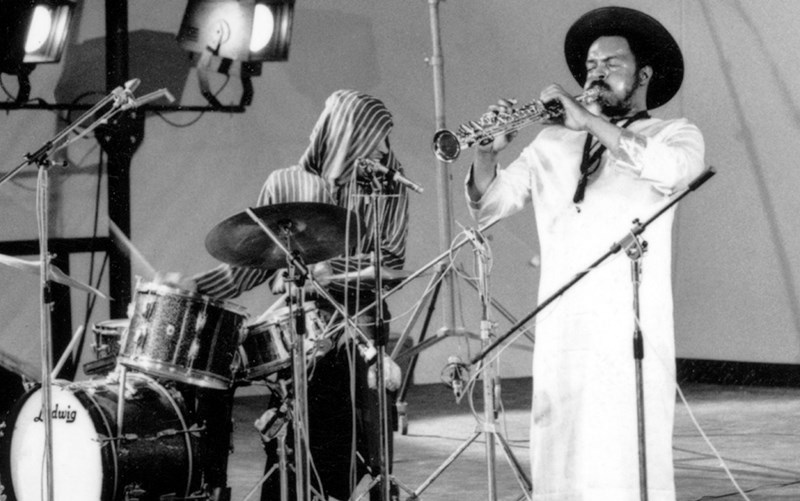
Albert Ayler. Fondation Maeght, July 27, 1970 (photo: Jacques Robert)
Shortly after Slug’s, he guested with the John Coltrane Quintet at the Village Vanguard, and it is here, perhaps, his lasting legacy in jazz can be found. His influence, albeit at one remove, on the music of Coltrane’s final period, saw the saxophonist taking a leaf out Ayler’s book by exploring sound as a thing in itself. He also incorporated Ayler’s use of voice and bagpipes into his music. Shortly afterwards, Ronald Shannon Jackson left, as very little money was involved in an Ayler gig – “We’d get a few gigs but nobody would come.” Around this time Ayler met Mary Parks at Count Basie’s, a late night Harlem grill famous for its chicken and waffles. Parks was 16 years older than Ayler, and depending on whose stories you believe, she was either stabilising or controlling.
Not having worked since his engagement at Slug's, when Ayler was offered a European tour, he snapped it up, forming a new band with Donald, Samson on violin, Bill Folwell on bass and Beaver Harris on drums. Several recordings have emerged documenting this tour, including The Berlin Concerts 1966 and several bootlegs. When the band appeared in London they were beset with difficulties from the start, with zealous customs officials strip searching the band for drugs, but finding none. However, the band did drink, with Donald standing on his head during the plane trip into England, which may have piqued the Customs official’s interest. On 15 November, 1966 they recorded a two hour concert at LSE for the BBC2 series Jazz Goes to College, the event subsequently acquiring a certain notoriety when the BBC refused to broadcast the programme.
After the tour, Ayler moved into Mary Parks’ apartment on Dean Street, Brooklyn. Her relationship with Albert quickly growing to the point where she organised his business affairs, Donald telling one journalist, “Mary kept him at home with her. She kept him away from everybody else and monopolised him… I thought Al was going in the wrong direction.” Albert, for his part seemed to get much from their relationship, not least since Parks had an office job that provided the financial stability for him to pursue his music. Gradually, she began to change this as well – Ayler had never sung during his performances, but after meeting her he never failed to. A concert the following year at the Village Theatre, was produced by Parks, who hired the hall and arranged the advertising, and emcee’d the concert, which was recorded by Impulse! at the behest of John Coltrane. Together with tracks recorded at the Village Vanguard, Albert Ayler In Greenwich Village, is generally regarded as being his best album for the label.
His next album, also highly thought of, was Love Cry, which documents the last recorded appearance of Donald with his brother. Experimental but accessible, with simple, often diatonic, themes and militaristic rhythms, it had Call Cobbs on harpsichord on five of the 11 tracks, with Alan Silva on bass and Milford Graves on drums. Reasons vary why Donald was subsequently fired by his brother, those most commonly cited were a drinking problem, Parks’ desire for more control, and Impulse!’s desire for a more commercial approach.
Next came New Grass, using music Parks claimed to have written before she met Ayler. “Here was Ayler singing lead on AM-radio pop songs and superimposing his unhinged sax skronk over funk, soul, and rock rhythms,” said the Pitchfork website. Ayler’s last studio album was Music Is the Healing Force of the Universe, with Parks credited as writing all the music and lyrics. Success eluded these final two Impulse! discs, leading to Ayler being shown the exit door. But the aura of otherworldliness that surrounded Ayler’s music did not die with those two albums.
I would say something, but I can’t talk. I’ve been blowing too hard
Albert AylerRevelations: The Complete ORTF 1970 Fondation Maeght Recordings (INA/Elemental), which has topped this year's Jazzwise Reissue & Archive Critics' Poll, is a 4-CD/3-LP set of the two concerts performed on 25 and 27 July, 1970. They are the last known Ayler recordings, and revealed him moving in a fresh musical direction. This was heralded by the degree to which Mary Parks had been integrated into Ayler’s music, and by the inclusion of five of the six tracks from Music Is The Healing Force of the Universe, and three outtakes from that session (that were later included in 1971 on The Last Album), all written by Parks, “They go nuts for my work,” she said later, “even at the Maeght Foundation.”
Even though three band members had never played together before the engagement, and the band did not rehearse prior to the concert, they coalesced well, with Ayler on saxes, musette and vocals, Parks on soprano and vocals, Call Cobbs on piano, Steve Tintweiss bass, and Allen Blairman on drums; they are collectively united by Parks’ and Ayler’s saxophones, who had clearly got things worked out between them.
Mary Parks (also known as Mary Maria) effectively co-stars alongside Ayler – for example, she narrates on the opening number of the set, ‘Music is the Healing Force of the Universe’; adds wordless vocal to colour Ayler’s improvisations on ‘Birth of Mirth’; has her own solo feature on soprano sax on ‘Masonic Inborn’ and she even walks the sacred ground of ‘Holy, Holy,’ featuring on soprano alongside Ayler. Despite naysayers from Ayler’s circle claiming she was a “music primitive,” and “a beginner,” she was much better than that. The final concert concludes with her vocalised closing statement, with Ayler responding to calls for an encore, saying, “I would say something, but I can’t talk. I’ve been blowing too hard.” It was the final thing he ever recorded – and four months later he was hauled out of the East River.
Grateful thanks to Richard Koloda's excellent biography 'Holy Ghost: The Life And Death Of Free Jazz Pioneer Albert Ayler', research from which is used in this feature.
This article originally appeared in the December 2022 issue of Jazzwise magazine. Never miss an issue – subscribe today
